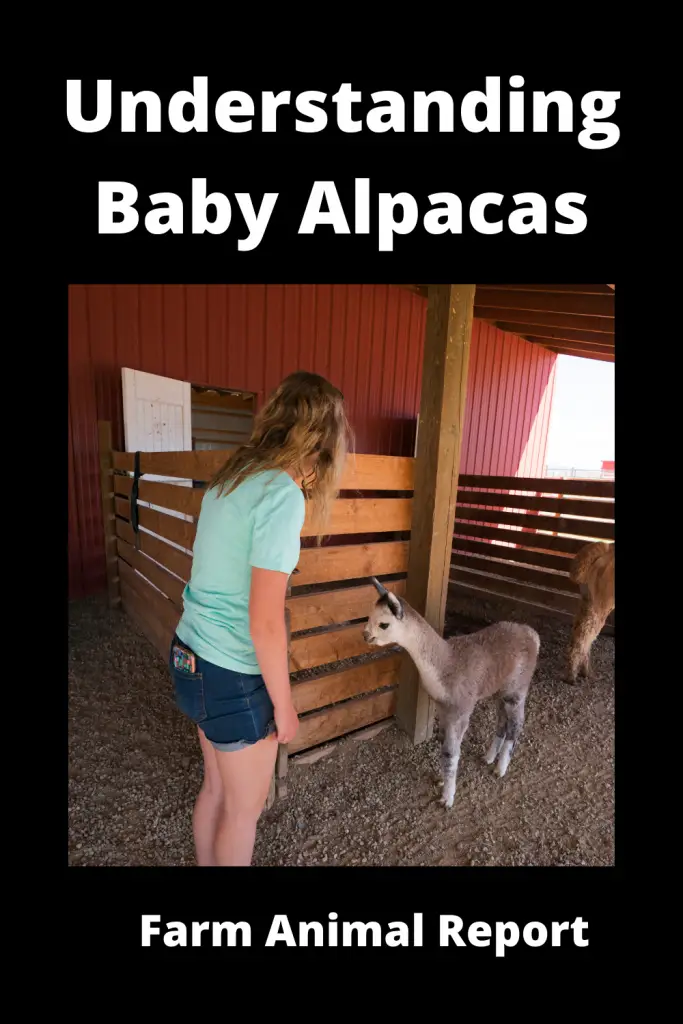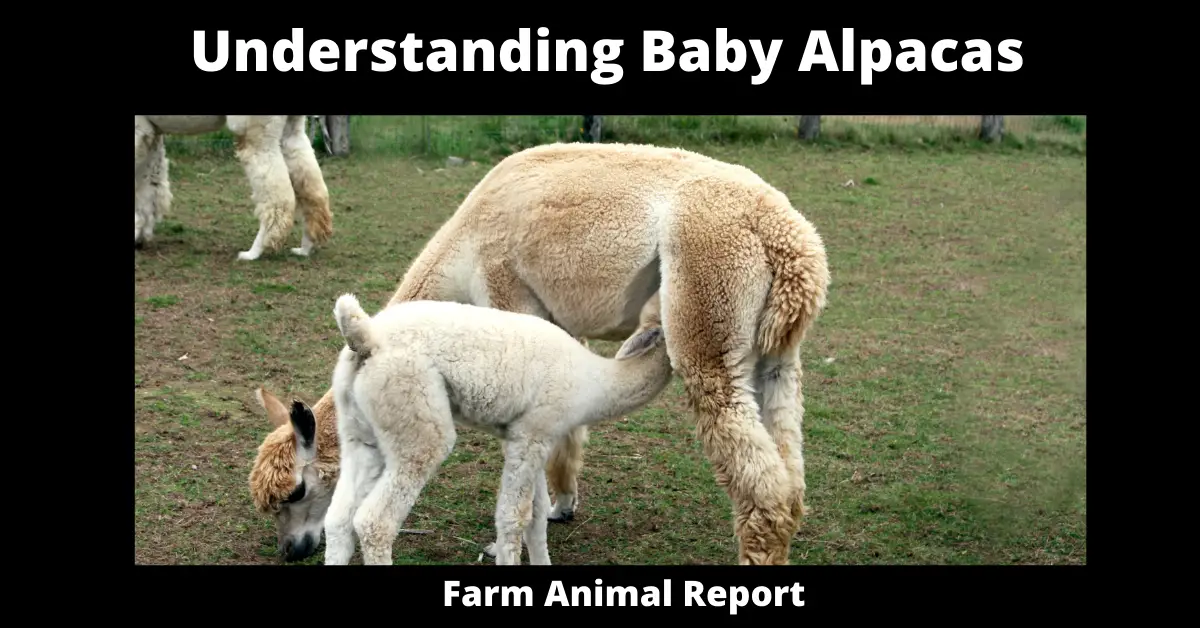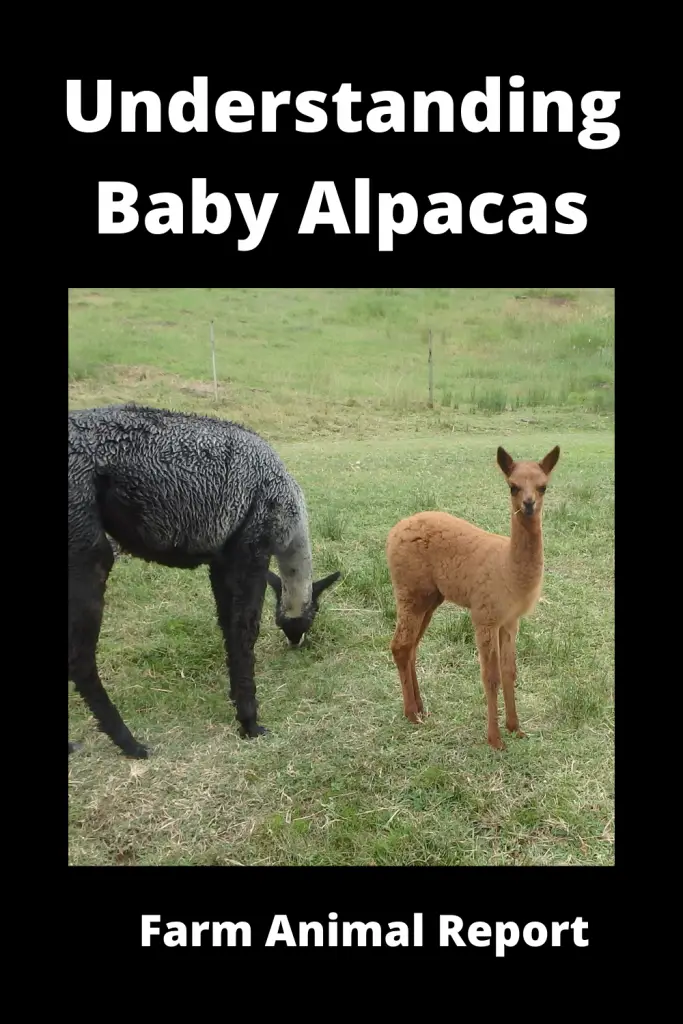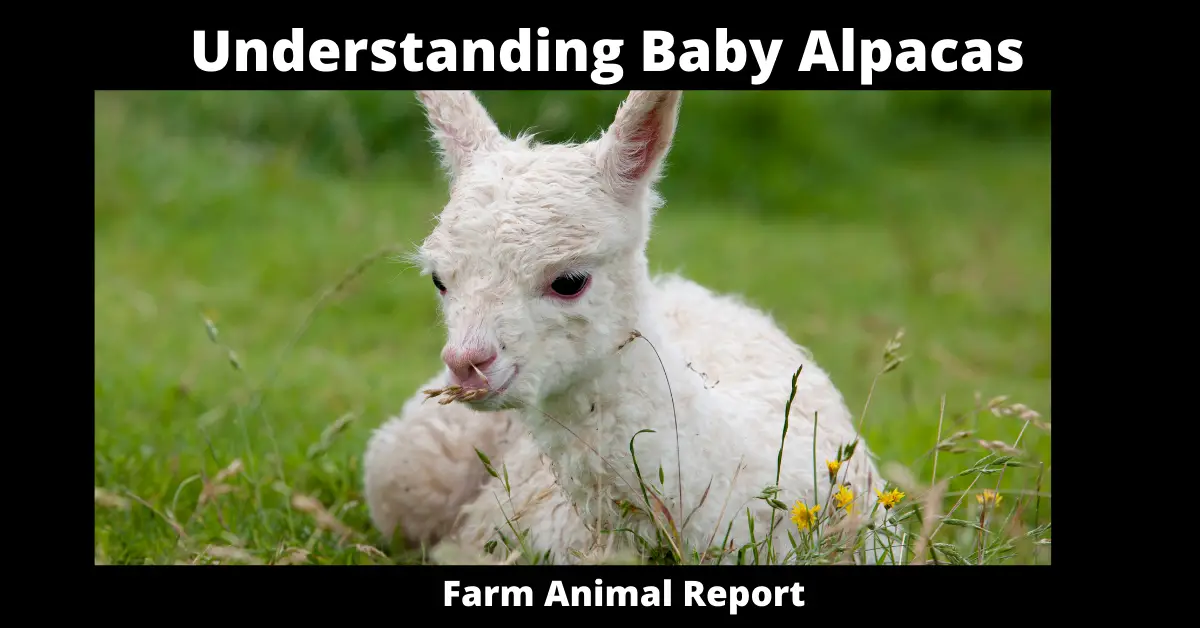What is a Newborn Baby Alpaca
As a General Rule Newborn Alpacas, and newborn cria, are reproduced once a year. Their gestation period is between 242 and 345 days or approximately 11 months. They can only bear a single offspring at a time. Alpaca babies (newborn cria) are generally born between May and September. Mothers of alpacas typically give birth during the day. This allows the baby to begin sucking before the temperature drops at night.
What is a Baby Alpaca Called? Baby Alpacas, also known as cria, weigh between (13lbs – 17lbs) 6 and 8 kg at birth. They can reach a weight of ( 150 lBS) 70 kilograms as adults. Shortly after birth, newborn alpacas can stand. The fact that Alpaca Young, these adorable infants can stand on their own at such a young age demonstrates their resilience. At the same time, alpacas, large or small, rarely wander off by themselves. If they do, they will not remain away for an extended period on their own.
Alpaca milk contains less fat and sodium than cow milk. Additionally, it has more calcium and phosphorus. Due to the low-fat content, baby Alpacas must frequently suckle to maintain growth. A cria will remain with its mother until it is weaned, usually between 5 and 6 months. Because alpacas are herbivores, they begin grazing immediately after weaning. They feed on grass, leaves, and occasionally bark. What is a Newborn Baby Alpaca called?
Jump to Bottle-Feeding Alpaca Cria
Wild alpacas, Their stomachs, like those of ruminants, are divided into three chambers. This highly efficient digestive tract efficiently breaks down food to provide alpacas with the fatty acids and nutrients they require. When a female alpaca, called hembra, reaches 12 to 15 months, she is ready to reproduce.

Males are referred to as ‘machos.’ They are sexually mature between 30 and 36 months. That is the age at which farms begin selling alpaca studs for breeding or keeping as pets.
Check Out Amazon’s Educational Resources for Raising Alpacas
Alpacas have a lifespan of up to 20 years.
Jump to Bottle-Feeding Alpaca Cria
They are available in approximately 22 recognized colors. While the majority of alpacas are solid colors, some have color variations and blends.
Alpacas are known for their gentle demeanor. While they are inquisitive and enjoy exploring on their own, they are easily scared. That is why they prefer to be around other alpacas. When alpacas are fearful or frightened, they typically huddle together and move in unison.
18 ways Alpaca Farmers make Money
When an alpaca hums, it may indicate that they are relaxed and content. Both mother and baby repeatedly hum the following birth. Additionally, they make a staccato clicking or snorting sound to alert others to the presence of potential danger. Further, it may indicate discomfort or restlessness.
Alpacas are gentle and endearing farm animals. Additionally, they are susceptible and quite intelligent. Their sounds convey specific messages and convey their emotions and fears.
Alpaca Babies Young are called – (Newborn Alpacas – Cria)
All newborn baby Alpacas will require a period of post-birth recovery before attempting to stand. Once upright, it will naturally seek a suckle from the dam. The birth to suckling sequence can be completed in less than an hour, and the majority will be completed within two hours.
The birth weight should be recorded, and it should be checked regularly to ensure that the child is usually gaining weight. The baby Alpaca may lose up to 0.25kg during the first 24 hours but will gain 0.25-0.5 kilograms daily after that. Although a newborn baby Alpaca weighs about 8kg, maiden dams tend to produce lighter offspring.
The birth weights of baby alpacas increase until the dam reaches nine, at which point they gradually decrease again. Notable is that the dam and baby Alpacas will frequently hum to one another during the bonding process, which may last several weeks.
Jump to Alpaca Babies: How Many?
A few baby Alpacas will require assistance in locating their dam’s nipples, as they may suckle from the wrong dam or even seek refuge in a dark area of the stable. New mothers should be examined to ensure waxy plugs do not obstruct milk flow in the nipples. The baby Alpacas must drink the dam’s colostrum because it contains antibodies that provide passive immunity for the newborn Alpacas. Because these antibodies cannot cross the alpaca placenta, they must be consumed.
Additionally, the colostrum contains compounds that protect the gut from pathogenic bacteria. Immunization of the dam with a 5-in-1 vaccine 2-4 weeks before the unpacking date significantly increases the antibody concentration in her colostrum. Within the first 24 hours, a baby Alpaca should consume 10-20% of its body weight in colostrum, though antibody absorption is greatest during the first 12 hours.
Baby Alpaca Birthing Kit – Can Put All in Plastic Tackle box or Similar
- Iodine – 2% – 7% dipping Umbilical Cord
- Small Glass for iodine to dip cord in
- Rectal Thermoter/ Digital Thermeter
- Plastic Gloves – Long cuffs
- Obstetric Lube
- Betadine Surgical Scrub – scrub females part prior to helping
- Dental Floss – To Tie the Cord
- Bulb Baby Syringe
- Sharp Scissors
- Sharp Pocket Knife
- Hemostat
- Halter and Lead
- Large soft towels
- Hair Dryer
- Clock and Watch
Dams will only feed their baby Alpacas and verify that they are feeding the correct one by sniffing at the base of the tail, where scent glands are located. The baby Alpacas’ seats will be raised at the beginning of the feeding session but will gradually drop throughout the session.
Opportunistic baby Alpacas may attempt to ‘steal’ feeds but are quickly pushed away when observed. Within 24 hours, baby Alpacas will pass meconium, a thick and tarry dark waste consisting of cellular material, mucus, and ingested amniotic fluid.

If the baby Alpacas do not eliminate the meconium, they will become lethargic and require veterinary help. Unfortunately, these droppings can easily be missed in the paddock, which means that the baby Alpacas’ behavior must be closely monitored during this time. Almost always, a single cria is unpacked. Twin births are uncommon, and one or both crias may not survive due to their low birth weights.
Although most twin pregnancies are resorbed or terminated prematurely, recent reports in New Zealand of both thriving have been reported. Lucy and Lucas, twins born at the Nevada stud, were born weighing 3.9 kg and developed to normal adult weights. At the Gilead stud, baby Alpacas weighing 5.5 kg typically developed, while those weighing 2.8 kg (Timmy, pictured) grew to the size of a four-month-old. Remating the dam should be done at least two weeks after birth. In nature, the dam will wean the baby Alpacas after approximately six months, when the growth rate of the new fetus she is carrying increases.
Weaning is typically initiated on New Zealand farms at six months or 25 kg body weight. However, some dams will wean the baby Alpacas prematurely by refusing to feed them or allowing feeds only at dusk. Weaning is typically accomplished by relocating the baby Alpacas into their paddock, preferably away from the dams.
Because this abrupt adjustment is stressful for them, they can be accompanied by one or two unrelated adults. The process takes approximately 12 weeks; if the baby Alpacas are reintroduced to the herd too soon, some may suckle their dams successfully.
How many Babies do Alpacas Have (Crias) at each Birth
Alpacas breed once a year and are frequently induced to breed at any time as livestock. The female alpaca gestates for 242 to 345 days and produces only one offspring. According to National Geographic, the birthing process can take up to seven hours.
What Size and How Fast do Baby Alpacas Grow
When a baby alpaca, called a cria, is born, it weighs between 18 and 20 pounds (8 and 9 kilograms). The baby Alpaca is weaned at 6 to 8 months, and females are ready to reproduce at 12 to 15 months. Males mature slightly more slowly and are ready to mate at 30 to 36 months. Alpacas can live up to twenty years.
When can you begin Training Baby Alpacas?
Baby alpaca training is typically conducted during the spring and summer months when junior alpacas are approximately 9/12 months old. Alpaca crias remain with their mothers until they are six months old and weaned. To minimize stress, the crias remain with their birthing group – weaning is accomplished by removing the females. After about a month of acclimating the crias to live independently, we begin their halter training.
How Long Before you need to Shear a Baby Alpaca.
Alpacas are hardy creatures bred for their luxurious, warm wool. Originating in South America’s Andes Mountains, they are accustomed to dry summers and cold winters. They may become ill or have difficulty reproducing in humid climates. Maintaining an eye on the temperature and humidity levels in your area can assist you in determining the optimal time to shear your alpacas to keep them comfortable and healthy.

Shearing Schedule
Each spring, shear your alpacas. This schedule enables them to have short wool in the heat of the summer and long wool in the winter. Consider the heat and humidity levels in your area when determining the optimal time to shear in the spring. If April is a typically hot month in your area, schedule your shearing early. If you require professional shearers, schedule your appointment in advance, as other customers will be scheduling their shearing simultaneously.
Jump To How to Shear a Baby Alpaca
Schedule Basis
Shearing schedules are determined by how well your alpacas tolerate the weather. They thrive in moderate dry heat and extreme cold, which is typical of the Andes Mountains, but alpacas are now found worldwide. They are found in both hemispheres, on continents such as North America, Australia, and Europe. Shearing in the spring helps the alpaca regulate its temperature in areas with humid summers and rainy winters.
Heat stress
Alpacas, like humans, rely on sweat to stay cool in extreme heat. Even if you have just sheared your baby alpacas, their sweat won’t evaporate well when the air is humid. As a result, your alpacas may become overheated. Calculate this risk by multiplying the forecast temperature and humidity percentages. For instance, a forecast temperature of 90 degrees and relative humidity of 45 percent results in a heat index of 135 degrees. Your alpacas may become overheated if the heat index exceeds 120.
Cold Stress
Shearing in the spring allows your alpacas to regenerate their wool for the winter. When winter arrives, you want her to have a long, luxurious coat made of alpaca wool to stay warm and safe from the wind. The semi-hollow fibers of wool trap heat close to the body. Additionally, they wick away moisture from the body, keeping the animals dry and warm.
Can You Bottle Feed a Baby Alpaca?
If Cria’s mother is present, her milk is always the best source of nutrition for Cria; therefore, whenever possible, assist Cria in nursing before feeding it anything else. Bottle feeding a cria for the first time can be a frustrating experience. When beginning to bottle-feed an uncooperative recipient, attempt to immobilize the Cria to some extent! Later on, once they’re accustomed to feedings, they’re likely to walk up and take the bottle.
Stabilize the Cria between your knees and the head against your body by standing over it. This frees up two of your hands to deal with Cria’s head and bottle. With your non-dominant hand, place fingers beneath the Cria’s jaw and insert the tip of your thumb into the Cria’s mouth to open it. Then insert the teat’s tip into Cria’s mouth. This usually results in cria sucking, but not always. If not, wiggle the nipple back and forth.
If this fails, squeeze a small amount of milk into Cria’s mouth to elicit a response. Avoid overdoing this to prevent the Cria from aspirating the milk into its lungs. While some crias will swallow what you squeeze into their mouths rather than sucking, the goal is to get the Cria sucking properly, or bottle-feeding will take longer.
Again, the positioning is intended to minimize wriggling that can occur when bottle-feeding with either approach or any other; attempting to keep the head and neck straight and in line with the rest of the body to maintain balance makes nursing easier nursing the Cria.
What Milk should you use when Bottle Feeding?
If the mother has died or the milk supply has been exhausted, we typically recommend goat’s milk as a first choice supplement. This can be fresh (undiluted) or canned, which must be diluted 50:50 with water due to the condensed nature of the milk. Alternatively, you can use powdered varieties prepared according to the manufacturer’s directions. Goat’s milk is nutritionally closest to camelid milk. Cow’s milk is also an acceptable substitute and can be either fresh or reconstituted from powder.
Baby Alpacas Foot Trimming
Alpacas do not have hooves; they have nails. Each foot has two distinct nails that must be trimmed. Their nails do not encircle the sole of the alpaca as a claw does, and they do not bear weight. On their feet, alpacas’ nails are made of the tough protein keratin!
And, like us, this constantly growing material requires maintenance to ensure their health and comfort. In the wild, an alpaca’s nails are naturally worn down by frequent walking on varied terrain. Still, most sanctuary environments prevent them from exploring sufficiently to allow this natural process to occur. As such, it is our responsibility to trim their nails for their health and well-being regularly!
Baby Alpacas Vaccination Needed
Alpacas, like sheep, are routinely vaccinated to protect against disease caused by Clostridium bacteria. You may have heard of the following clostridial diseases: tetanus, botulism, pulpy kidney, and blackleg. There are multi-strain vaccines available, such as Lambivac, Bravoxin 10, and Covexin 10, that protect against four, ten, and ten different Clostridial pathogens, respectively. Regrettably, Heptavac, which many alpaca clients used to safeguard against clostridial disease, is no longer produced.
How Much Space Is Needed for a Baby Alpaca
Anyone with an acre of pasture is capable of keeping alpacas. They are stocked at a rate one higher than sheep, resulting in approximately six alpacas per acre throughout the year. Increased stocking rates are possible with land rotation and improved pasture.
Can I keep a Baby Alpaca By Itself
Alpacas are herd animals and cannot be left alone to live happily. While you may be tempted to keep a single alpaca as a pet, this is not a wise decision. You’ll require at least two. Three is preferable. If you do not intend to breed alpacas, two females or two neutered males can live happily together.
Fortunately, these small, gentle creatures do not require a lot of space. Indeed, you can keep up to eight alpacas on one acre. They like a wooded setting with an underbrush and a variety of plants to nibble. Hay from the second cutting of grass should be provided.
If you do not have access to a wooded area for your alpacas, you can keep them in a corral and feed them only hay. Consult your county agriculture extension agent to determine the best course of action for your particular situation.
How Long before a Baby Alpaca Can Mate?
Young females are ready to be mated to a stud male when they reach 60% of their mother’s weight or are 14 months old. Following a normal birth and thorough cleansing within 12 hours of delivery, a female should be in a fit state to return to a male between 10-14 days postpartum.
While some males are fertile as early as nine months of age, most males are not fertile until they reach 2-3 years. During copulation, the stud male penetrates the female’s cervix and repeatedly deposits sperm into each uterine horn. This action has the potential to damage the uterine lining and disrupt the development of a pregnancy. Avoid frequent and indiscriminate mating.
The choice of stud males is critical. The stud should be chosen to improve the female’s characteristics, such as crimp or micron count, as the male significantly influences the offspring’s quality. Around six months of age, Cria should be weaned. It is not prudent for the safety of a pregnant mother to give birth in a field with deep puddles, ponds, or streams.
Hypothermia can be fatal to young and newborn Cria in cold or wet weather. Cria should receive their first vaccination at four weeks of age, followed by a booster four to six weeks later. They should then follow the adult herd’s regular schedule. Worming of Cria is typically initiated during weaning. Late-born Cria can be given vitamin A, D, and E boosters as a preventative measure against rickets in the autumn.
Feed and Vitamins for Baby Alpacas
Young females are ready to be mated to a stud male when they reach 60% of their mother’s weight or are 14 months old. Following a normal birth and thorough cleansing within 12 hours of delivery, a female should be in a fit state to return to a male between 10-14 days postpartum.
While some males are fertile as early as nine months of age, most males are not fertile until they reach 2-3 years. During copulation, the stud male penetrates the female’s cervix and repeatedly deposits sperm into each uterine horn. This action has the potential to damage the uterine lining and disrupt the development of a pregnancy. Avoid frequent and indiscriminate mating.
The choice of stud males is critical. The stud should be chosen to improve the female’s characteristics, such as crimp or micron count, as the male significantly influences the offspring’s quality. Around six months of age, Cria should be weaned. It is not prudent for the safety of a pregnant mother to give birth in a field with deep puddles, ponds, or streams.
Hypothermia can be fatal to young and newborn Cria in cold or wet weather. Cria should receive their first vaccination at four weeks of age, followed by a booster four to six weeks later. They should then follow the adult herd’s regular schedule. Worming of Cria is typically initiated during weaning. Late-born Cria can be given vitamin A, D, and E boosters as a preventative measure against rickets in the autumn.
What Predators will go after Baby Alpacas
Alpacas that are fully grown are generally safe from coyotes and may chase away small predators (such as coyotes) to protect their herd. Alpacas or other animals such as sheep can be included in the herd. However, baby alpacas may be targeted by coyotes and thus require additional predator protection.
We also Have our extensive Guide here – 18 Ways to Make Money Alpaca Farming
Baby Alpaca Newborn | Baby Alpaca
What do Baby Alpaca Newborns look like?
One of the cutest things you will ever see is a baby alpaca. They are so small and fluffy, and their faces are just so cute! Alpacas typically give birth to one or two babies at a time, and they weigh around six pounds when they are born. Baby alpacas have very soft fur, which keeps them warm in the chilly Andean climate.
What do Baby Alpaca Newborns look like when being born?
At Birth, Baby Alpacas come out with a very wet and slimy-looking coat. This is because they are covered in a substance called vernix caseosa which protects their skin from the amniotic fluid. The baby’s hair is often matted together with this vernix, so it can take a few washes to get it all off!
Their eyes are usually closed and they are very sleepy looking. The umbilical cord is still attached and will be for a few days. Baby Alpacas typically weigh around six pounds at birth.
In the first few weeks of life, baby alpacas will gain weight rapidly as they nurse from their mothers. They will start to lose their soft, wet newborn coat and will grow the long, wooly coat that we are used to seeing on adult alpacas. Baby Alpacas are usually standing and walking within a week or two of being born!
What do Baby Alpaca Newborns look like at 1 Month?
At 1 Month old, Baby Alpaca Newborns have a very thin coat of fur that is starting to grow. Their faces are also starting to fill out and they are becoming more alert. They will start to explore their surroundings and will sometimes try to nibble on things. Their weight will be above 12lbs and they will start to eat solid food. At this age, they are very cute and cuddly!
What do Baby Alpaca Newborns look like at 3 Months?
At three months old, baby alpacas are starting to resemble their parents a little more. They have gained some weight and their coat is getting thicker. Their facial features are also becoming more defined. You may be able to start telling males from females at this age, as males will start to grow a bit of a mustache. Baby alpacas are still very playful and enjoy running around. They are starting to learn how to eat solid food, but will still nurse from their mothers. At this age, baby alpacas should weigh about 40-45 pounds.
What do Baby Alpaca Newborns look like at 6 Months?
At 6 Months, Baby Alpaca Newborns have a full coat of fiber. The fiber is very soft and can be a variety of colors, including white, black, brown, or any color in between. Their faces are also starting to take on the features of an adult alpaca. Their ears are up, and their eyes are bright and alert. They are starting to become more playful, and will often run around with their siblings. Baby Alpacas at this age weigh about 60-70 pounds.
Final Thoughts
The first four days of a Newborn Alpacas, Cria’s life is critical. During this period, the majority of Alpaca breeders will check on their newborns hourly. You’ll need to ensure they stay warm and maintain their bond with their mother.
Unless they are ill, their mother should keep them warm at night. If the mother perceives that the young Cria is a liability to predators, they will flee in an attempt to stay alive. If they do not sleep with the Cria, you will need to provide blankets and possibly even cuddle them yourself.
Once the mother assumes responsibility for the Alpaca Cria, you can space out your checkups slightly more. Maintain a close eye on progress, but check in less frequently. Once a week has passed, you should be safe. While you should not stop checking altogether, you will be less likely to encounter issues before you have time to react.


